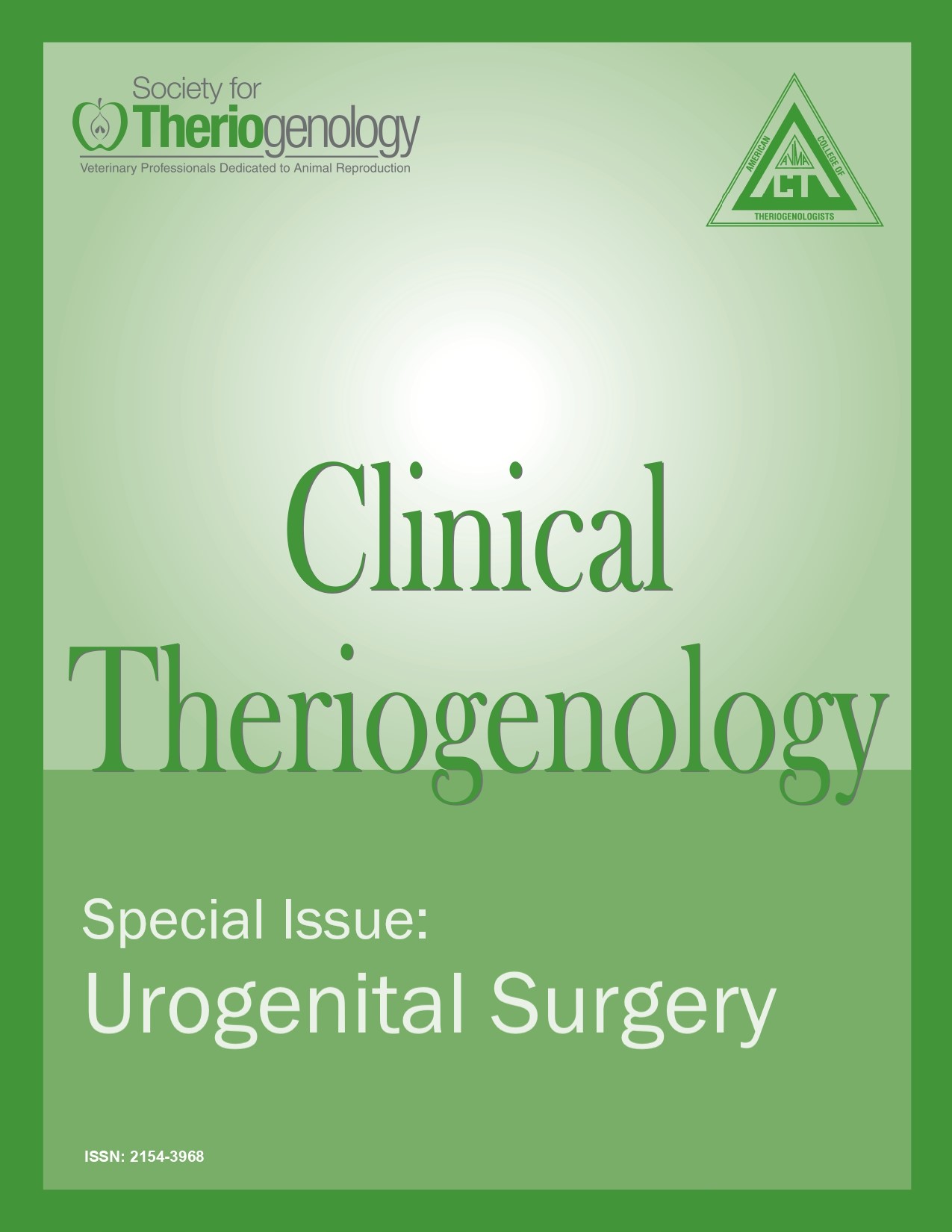Common swine field reproductive surgeries
Abstract
Reproductive surgery in commercial swine is limited by the relative limited financial value of animals with limited market value. In herds containing animals with high genetic value, biosecurity concerns often preclude the movement of animals to a hospital facility. Performing some procedures on the farm may be economically feasible and reduce culling rates. Growing concerns for animal welfare and the increasing popularity of pigs as pets dictates a larger involvement of veterinarians in surgical procedures in swine.1 This manuscript describes common reproductive surgeries for male swine, practical anesthetic protocols, and the post-operative treatments that a veterinary practitioner should be able to perform. The most frequently requested surgery in boars is castration, which is usually performed by management during the first week of age as a portion of on-farm processing. In adult boars, castration is occasionally requested to improve the quality of the meat and reduce the boar taint in animals destined for slaughter. Orchiectomy of adult boars is increasingly requested for pot-bellied pigs, and other breeds maintained as pets and rescued by “sanctuaries” to avoid unwanted breedings and reduce aggressive behavior. Inguinal herniation, a common disorder in intact boars, often requires surgical correction in both production settings and pet pigs. Because of the presumed heritable basis, surgery in animals intended for breeding should be discouraged. Swine have one of the highest incidences of cryptorchidism among common livestock species.2 Surgical correction of cryptorchidism in breeding animals is strongly discouraged due to the likelihood of a heritable basis for the failure of testicular descent. Cryptorchidectomy as a portion of bilateral castration is often requested for animals being shown in livestock exhibitions and occasionally in commercial facilities for animals intended for slaughter.
Downloads
References
2. Amann RP, Veeramachaneni DNR: Cryptorchidism in common eutherian mammals. Reproduction 2007;133:541–561. doi: 10.1530/REP-06-0272
3. Hodgkinson O: Practical sedation and anaesthesia in pigs. In Pract 2007;29:34–39. doi: 10.1136/inpract.29.1.34
4. Smith AC, Ehler WJ, Swindle MM: Chapter 14 – Anesthesia and analgesia in swine. In: Kohn DF, Wixson SK, White WJ, et al: editors. Anesthesia and Analgesia in Laboratory Animals. San Diego, CA; American College of Laboratory Animal Medicine: Academic Press; 1997:313–336.
5. Ko JCH, Thurmon JC, Tranquilli WA, et al: Problems encountered when anesthetizing potbellied pigs. Vet Med 1993; 88:435–437.
6. Fubini SL, Ducharme N. In: Farm Animal Surgery. 2nd edition. NX Amsterdam, NX: Elvesier; 2017.
7. HuiChu Lin. Comparative Anesthesia and Analgesia of Ruminants and Swine. In: Veterinary Anesthesia and Analgesia. Hoboken, New Jersey: Wiley Online Library; 2015.
8. EU Monitor. Directive 2008/120. Minimum Standards for the Protection of Pigs (Codified version).
9. Clarnette TD, Hutson JM: Is the ascending testis actually ‘stationary’? Normal elongation of the spermatic cord is prevented by a fibrous remnant of the processus vaginalis. Pediatr Surg Int 1997;12:155–157. doi: 10.1007/BF01349987
10. Du Z-Q, Zhao X, Vukasinovic N, et al: Association and haplotype analyses of positional candidate genes in five genomic regions linked to scrotal hernia in commercial pig lines. PLoS One 2009;4:e4837. doi: 10.1371/journal.pone.0004837
11. Searcy-Bernal R, Gardner IA, Hird DW: Effects of and factors associated with umbilical hernias in a swine herd. J Am Vet Med Assoc 1994;204:1660–1664.
12. Thaller G, Dempfle L, Hoeschele I: Maximum likelihood analysis of rare binary traits under different modes of inheritance. Genetics 1996;143:1819–1829. doi: 10.1093/genetics/143.4.1819
13. Dolf G, Gaillard C, Schelling C, et al: Cryptorchidism and sex ratio are associated in dogs and pigs. J Anim Sci 2008;86:2480–2485. doi: 10.2527/jas.2007-0607
14. Rothschild MF, Christian LL, Blanchard W: Evidence for multigene control of cryptorchidism in swine. J Hered 1988;79:313–314.
15. Fan X, Liu Y, Yue M, et al: Effect of cryptorchidism on the histomorphometry, proliferation, apoptosis, and autophagy in boar testes. Animals 2021;11:1379. doi: 10.3390/ani11051379
16. Woods AL, Tynes VV, Mozzachio K: Special considerations for show and pet pigs. In: Zimmerman JJ, Karriker LA, Ramirez A, Schwartz KJ, Stevenson GW, Zhang J, eds. Diseases of Swine. Hoboken, New Jersey: John Wiley & Sons, Ltd, 2019:211–220. doi: 10.1002/9781119350927.ch13

This work is licensed under a Creative Commons Attribution-NonCommercial 4.0 International License.
Authors retain copyright of their work, with first publication rights granted to Clinical Theriogenology. Read more about copyright and licensing here.





